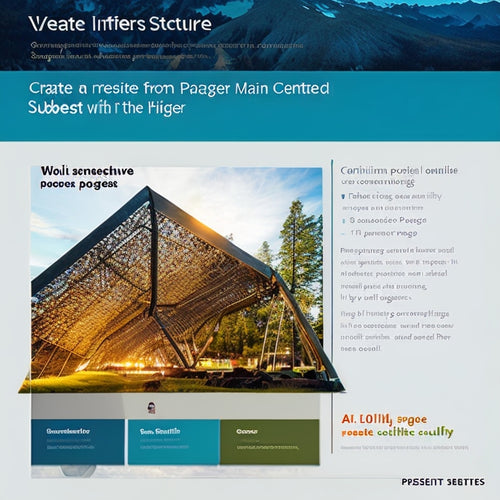
Revolutionizing E-Commerce: Mastering Spring Development
Share
We're building a cutting-edge e-commerce platform from the ground up, leveraging Spring Development to create a seamless, scalable, and highly performant online shopping experience. We start by creating a new Spring Boot project, prioritizing user experience and ensuring seamless integration with various technologies. Next, we configure the backend environment with H2 database, implementing exception handling strategies for database-related errors. Then, we craft a user-friendly Angular frontend with custom components, data binding, and Bootstrap styling. By mastering these essential development steps, we're poised to revolutionize the e-commerce landscape - and there's more to explore as we dive deeper into the intricacies of e-commerce development.
Key Takeaways
• Develop a scalable e-commerce architecture leveraging Spring Boot's advanced features and tools for seamless integration with various technologies.
• Configure the backend environment by setting up an H2 database, specifying connection details, and implementing exception handling strategies for database-related errors.
• Implement robust error handling and data validation to ensure accuracy and optimize API performance for responsiveness in managing API requests and data.
• Design and implement a user-friendly Angular frontend with custom components, data binding, and Bootstrap styling to enhance customer experience and improve order fulfillment processes.
• Integrate the Spring Boot application with the Angular frontend, and implement caching mechanisms and load balancing for optimization to revolutionize e-commerce operations.
Building the E-commerce Foundation
We begin constructing the e-commerce foundation by creating a new Spring Boot project, leveraging the latest version's advanced features and tools to establish a solid base for our application. This allows us to focus on developing a scalable e-commerce architecture that integrates seamlessly with various technologies.
As we design our application, we prioritize user experience, aiming to create a responsive design that adapts effortlessly to different devices and screen sizes. By doing so, we secure a smooth and secure shopping experience for our users.
Our e-commerce foundation is built on a solid understanding of technology integration, enabling us to create a robust and efficient system that meets the demands of modern online shopping.
Configuring the Backend Environment
Configuring the backend environment involves setting up the H2 database, an important step in establishing a reliable data storage system for our e-commerce application.
We'll create a separate configuration file for the database, specifying the connection URL, username, and password. This guarantees a secure connection to the database, safeguarding our application's data.
Next, we'll configure the Maven dependencies required for the H2 database.
Additionally, we'll implement exception handling strategies to handle potential database-related errors. This includes catching and logging exceptions, enabling us to quickly identify and resolve issues.
Crafting the Angular Frontend
With the backend environment successfully configured, our attention turns to crafting the Angular frontend, where we'll design and implement a user-friendly interface that seamlessly interacts with our API.
We'll create custom Angular components, leveraging data binding to dynamically update the UI. This will enable us to efficiently display product information, shopping cart details, and order summaries.
To enhance the visual appeal, we'll incorporate Bootstrap for styling, ensuring a responsive design that adapts to various devices and screen sizes.
Managing API Requests and Data
As we explore managing API requests and data, enabling seamless communication between our frontend and backend components becomes essential, requiring the implementation of efficient data exchange mechanisms.
To achieve this, we focus on:
-
Handling data validation: Guaranteeing that data is accurate and consistent across both frontend and backend components.
-
Optimizing API performance: Minimizing latency and maximizing throughput to provide a responsive user experience.
-
Implementing robust error handling: Catching and handling errors effectively to prevent data corruption and sustain system stability.
- Defining clear data models: Structuring data in a way that's easy to understand and work with, reducing errors and improving maintainability.
Streamlining E-commerce Operations
We streamline e-commerce operations by designing efficient workflows that automate routine tasks, simplify order fulfillment, and enhance overall customer experience.
By integrating our Spring Boot application with Angular, we guarantee seamless interaction between frontend and backend components. This enables us to optimize performance, reducing latency and improving response times.
We also implement caching mechanisms to minimize database queries, further enhancing user experience. Additionally, we utilize load balancing and auto-scaling to handle high traffic volumes, ensuring our application remains resilient and responsive.
Frequently Asked Questions
How Do I Handle Concurrent Updates to Shopping Cart Items Efficiently?
When handling concurrent updates to shopping cart items, we utilize optimistic locking, leveraging version numbers to detect and resolve conflicts, thereby optimizing performance and ensuring data consistency while handling race conditions.
What Is the Best Approach to Implementing Search Functionality for Products?
We're exploring the best approach to implementing search functionality for products, considering search algorithm optimization for faster results and user experience enhancement through intuitive filter customization and product categorization.
Can I Use a Different Database Instead of H2 for Production Environments?
We can definitely opt for a different database for production, but we'll need to guarantee a seamless database migration to maintain data consistency, avoiding any potential data loss or corruption during the switch.
How Do I Secure API Endpoints to Prevent Unauthorized Access?
We implement authentication mechanisms, such as OAuth or JWT, and role-based access control to secure API endpoints, ensuring only authorized users can access sensitive data and perform specific actions.
What Is the Recommended Method for Deploying the E-Commerce Application?
Did you know that 50% of users abandon apps that take over 3 seconds to load? We deploy our e-commerce app using load balancing strategies and continuous integration deployment to guarantee seamless user experiences.
Related Posts
-
How Can I Optimize My Videos for Seo on Shopify?
In today's digital landscape, optimizing videos for SEO on Shopify has become crucial for businesses looking to incr...
-

Why and How to Create a Sitemap for Improved SEO
This article explores the significance of creating a sitemap for enhanced search engine optimization (SEO) and provi...
-

How Do I Create a Product Feed on Shopify
This article provides a comprehensive guide on creating a product feed on Shopify. The benefits of using a product f...

